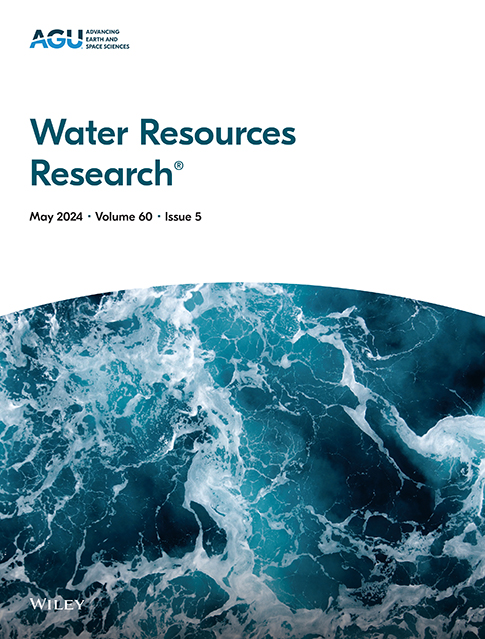校准全球水文模型对区域水旱灾害预测分析的益处:长江流域案例研究
IF 4.6
1区 地球科学
Q2 ENVIRONMENTAL SCIENCES
引用次数: 0
摘要
未校准的全球水文模型主要用于预测全球变暖及其影响下的洪水和干旱变化,但目前尚不清楚模型校准如何有益于这些预测。以长江流域为例,我们比较了在不同变暖水平下,未校准和校准的社区水模型模拟的洪涝和干旱频率及其影响(受影响的面积、人口和国内生产总值)的预测变化。这些预测是由耦合模式比较项目第6阶段的10个环流模式(GCMs)驱动的,这些模式是在部门间影响模式比较项目框架内进行的。校准显著改善了模拟流量,但气候变化下的校准对预估洪水频率增加及其相关影响的影响较小,而在干旱预估中则有显著作用。我们进一步量化了gcm、排放情景和校准方法对预估影响的相对贡献,发现gcm主要驱动预估的洪水变化,而排放情景和校准对2050年后干旱预估的变化贡献更为显著。对校准的不同敏感性归因于极端降水在洪水产生中的主导地位以及长期蒸散发趋势对干旱发生的影响。研究结果表明,未来基于未校准的水文模型对洪水频率和风险的相对变化的预测可能对温暖潮湿地区仍然相当可靠。然而,谨慎的校准和模型改进对于提高未来干旱影响评估的可靠性至关重要。本文章由计算机程序翻译,如有差异,请以英文原文为准。
Benefits of Calibrating a Global Hydrological Model for Regional Analyses of Flood and Drought Projections: A Case Study of the Yangtze River Basin
Uncalibrated global hydrological models are primarily used to inform projections of flood and drought changes under global warming and their impacts, but it remains unclear how model calibration might benefit these projections. Using the Yangtze River Basin as a case study, we compare projected changes in flood and drought frequencies and their impacts—area, population, and gross domestic product affected—at various warming levels, from uncalibrated and calibrated simulations with the Community Water Model. These projections are driven by 10 General Circulation Models (GCMs) from Coupled Model Intercomparison Project Phase 6, within the Inter-Sectoral Impact Model Intercomparison Project framework. Calibration significantly improves simulated discharge, yet the impact of calibration under climate change on projected increases in flood frequency and their associated impacts is minor, in contrast to its notable role in drought projections. We further quantify the relative contribution of GCMs, emission scenarios, and calibration approaches to the projected impacts, finding that GCMs primarily drive projected flood changes, while emission scenarios and calibration contribute more significantly to the variance in drought projections after 2050. The differing sensitivities to calibration are attributed to the dominance of extreme precipitation in flood generation and the influence of long-term evapotranspiration trends on drought occurrence. The findings imply that future projections of relative changes in flood frequency and risks based on uncalibrated hydrological models are likely still quite reliable for warm and humid regions. However, careful calibration and model improvement is crucial for enhancing the reliability of future drought impact assessments.
求助全文
通过发布文献求助,成功后即可免费获取论文全文。
去求助
来源期刊

Water Resources Research
环境科学-湖沼学
CiteScore
8.80
自引率
13.00%
发文量
599
审稿时长
3.5 months
期刊介绍:
Water Resources Research (WRR) is an interdisciplinary journal that focuses on hydrology and water resources. It publishes original research in the natural and social sciences of water. It emphasizes the role of water in the Earth system, including physical, chemical, biological, and ecological processes in water resources research and management, including social, policy, and public health implications. It encompasses observational, experimental, theoretical, analytical, numerical, and data-driven approaches that advance the science of water and its management. Submissions are evaluated for their novelty, accuracy, significance, and broader implications of the findings.
 求助内容:
求助内容: 应助结果提醒方式:
应助结果提醒方式:


